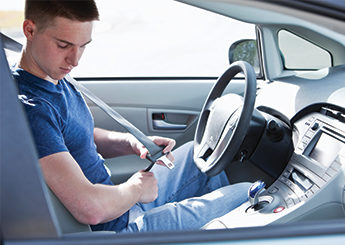NHTSA: Safety belt use continues to rise

Photo: Susan Chiang/iStockphoto
Washington – Use of safety belts continues to increase, as the rate of deaths of unrestrained passenger vehicle occupants has decreased, according to a report from the National Highway Traffic Safety Administration.
The overall rate of safety belt use in 2015 was 88.5 percent, up from 86.7 percent the previous year, based on the National Occupant Protection Use Survey. The rate has increased from 70.7 percent in 2000. Meanwhile, the percent of unrestrained occupant deaths has decreased to 40.3 percent in 2014 from 51.6 percent in 2000.
To acquire the data, safety belt use of about 123,000 occupants in almost 100,000 vehicles was tracked at nearly 2,000 randomly chosen roadway sites. Observers watched occupants from the roadside or while riding in a vehicle on expressways from 7 a.m. to 9 p.m. in June 2015. A driver or front-seat passenger was “belted” if the shoulder belt appeared to cross the front of his or her body, the report states.
Safety belt use among occupants in passenger cars rose to 90.3 percent in 2015 from 88.1 percent in 2014, according to the report. Safety belt use for occupants in pickup trucks increased to 80.8 percent in 2015 from 77.2 percent in 2014.
Other findings revealed that safety belt use remained higher in states with primary enforcement (when vehicles can be pulled because occupants are not using safety belts). In addition, safety belt use was higher in the West than the Northeast, Midwest and South.
Safety belt use lowers the risk of fatal injury to front-seat occupants of passenger cars by 45 percent and the risk of “moderate-to-critical injury” by 50 percent, the report notes.
Post a comment to this article
Safety+Health welcomes comments that promote respectful dialogue. Please stay on topic. Comments that contain personal attacks, profanity or abusive language – or those aggressively promoting products or services – will be removed. We reserve the right to determine which comments violate our comment policy. (Anonymous comments are welcome; merely skip the “name” field in the comment box. An email address is required but will not be included with your comment.)

